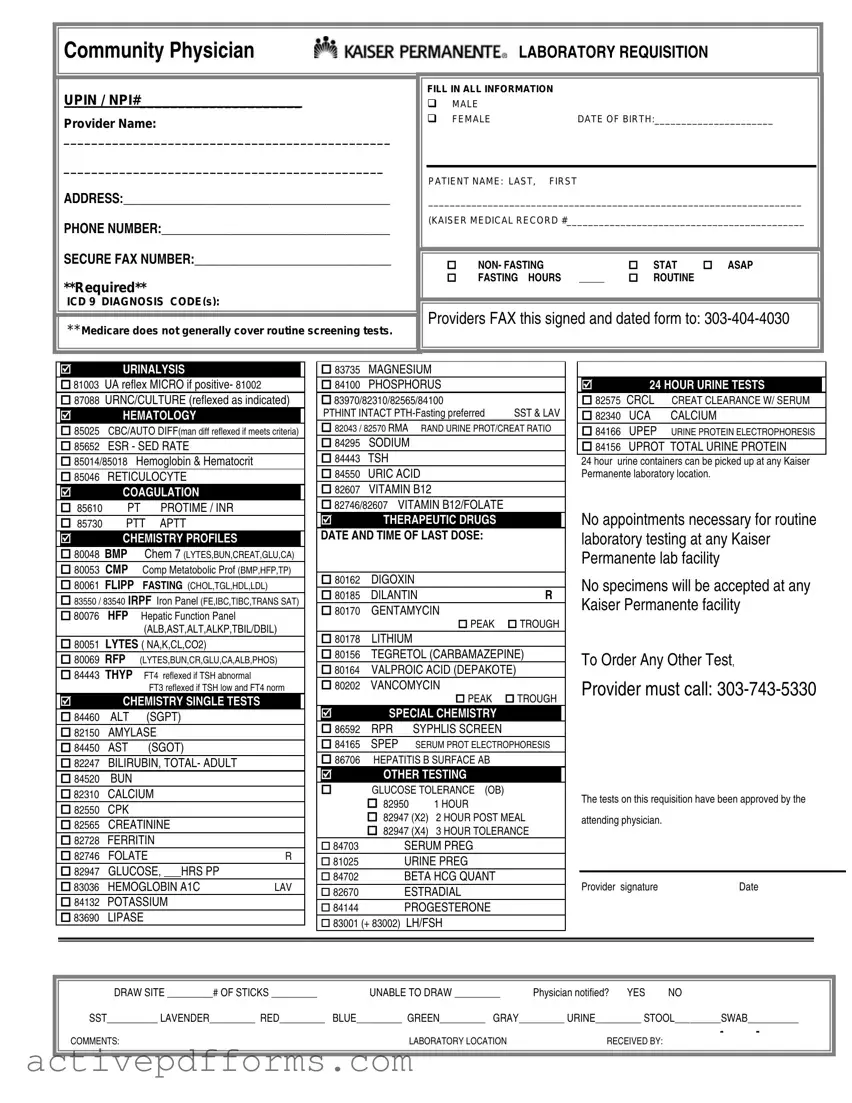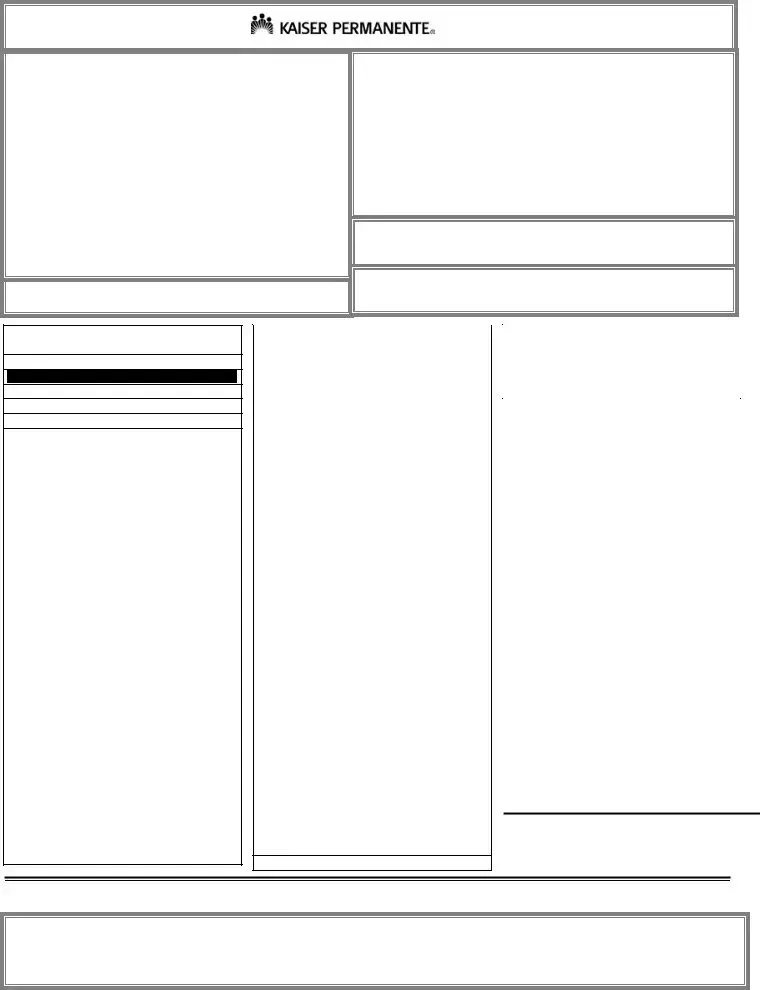In the realm of healthcare management and diagnostic procedures, the Laboratory Requisition Form plays a critical role, serving as an essential bridge between the attending physician's clinical assessment and the laboratory's diagnostic capabilities. This comprehensive document, which often originates from a community physician or healthcare provider, encapsulates critical patient information, including but not limited to, the provider's details, patient demographic data, and specific test orders with pertinent codes such as the ICD 9 diagnosis codes. Notably, it underscores Medicare’s stance on routine screening tests and emphasizes the necessity of filling out all sections of the form thoroughly. This includes delineating the patient's gender, date of birth, and the required tests categorized into various sections such as urinalysis, hematology, coagulation, and chemistry profiles among others. It also specifies the condition under which blood samples should be drawn (e.g., fasting, non-fasting) and provides options for urgent requests like STAT or ASAP, thereby fine-tuning the urgency and specificity of the diagnostic process. The form further guides on how to submit the requisition through secure fax numbers and stipulates the protocol for therapeutic drug monitoring and special chemistry testing, solidifying its role as a critical tool in ensuring the accuracy and efficacy of patient diagnosis and treatment planning. Moreover, the instructions regarding routine and special testing, including 24-hour urine tests, exemplify the form's comprehensive nature in facilitating a wide array of diagnostic tests critical for patient care.

